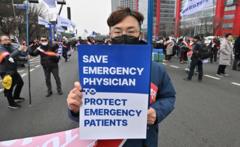South Korea's medical students have decided to end their 17-month-long boycott of classes, a significant turn after their protests against government plans to increase medical school admissions. The announcement comes from the Korean Medical Association, which highlights the students' concerns regarding the potential dilution of education quality due to the proposed rise in admissions.
While there is no specific timeline for when classes will fully resume, the association stresses the need for the government to restore the academic calendar and enhance training conditions. Prime Minister Kim Min-Seok has expressed his approval of this decision, referring to it as a "big step forward." In a statement posted on Facebook, he emphasized the importance of collaboration between citizens, Congress, and the government to address existing challenges within the healthcare sector.
The Korean Medical Association and other lobbying groups have expressed their commitment to returning to education, signalling their trust in government efforts to address healthcare and educational issues. Originally, the government aimed to increase the annual enrollment of medical students from approximately 3,000 to 5,000, citing the need to bolster healthcare staffing amidst rising demand. However, this plan was put on hold until March 2025.
Reports from Yonhap News Agency indicate a considerable number of students—8,305—will face grade retention, meaning they must repeat their academic year due to the prolonged boycott. This situation serves as a reminder of the ongoing challenges within South Korea’s educational and healthcare landscapes, as students transition back to regular classes after a historic hiatus.


















